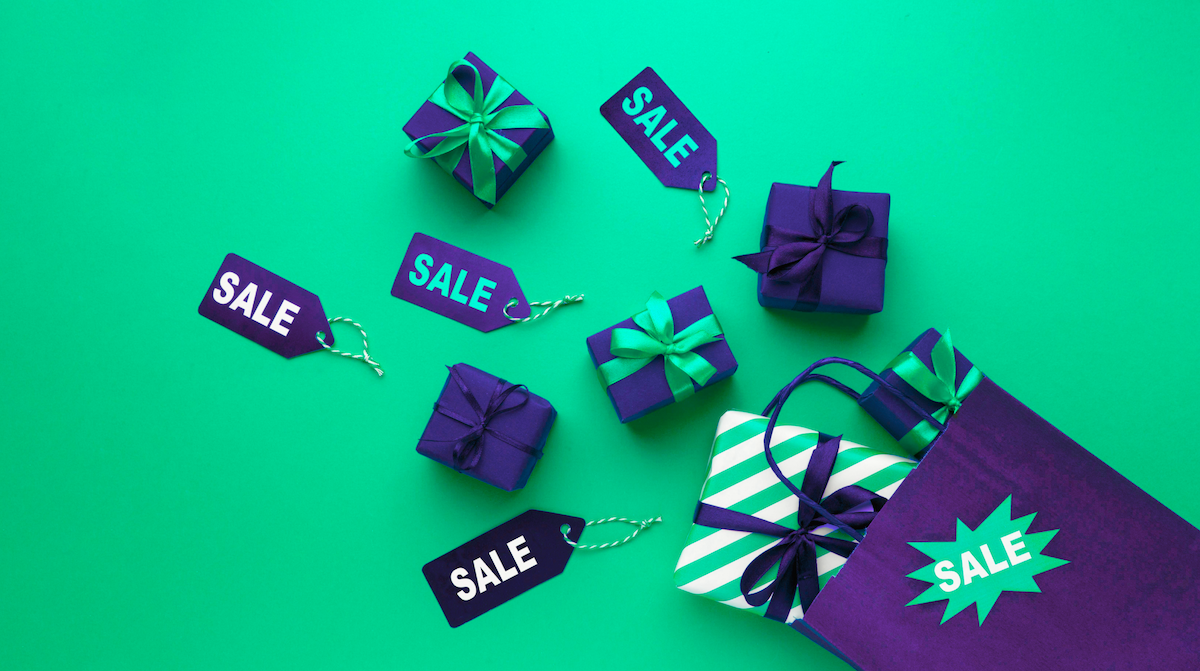T’is the most wonderful time of the year and it seems all businesses can talk about is what discounts they are offering! As always, businesses are coming up with all manner of discounting strategies, present economic gloom notwithstanding. “Despite concerns about the economy, renewed holiday cheer coupled with growing savings means that US consumers want to spend. Nearly 40 percent of survey respondents say they intend to splurge for themselves or for others. This intention to spend extra on items is especially evident among Gen Zers and millennials,” says the global consulting firm, McKinsey & Co..
Discounting is one of the most popular holiday strategies for businesses to meet their end-of-year sales goals. This is driven in part by consumers always hunting for bargains and by every competitor choosing to discount as well. With this in mind, it's worth remembering the economic purpose of a discount – creating more varied price points to meet your customers’ willingness-to-pay (WTP).
When you can only set one price for all customers, or a group/segment of customers, a discount allows you to further refine this to almost an individual level. In the B2B world, this is often in the hands of the salesperson. In the B2C world, one has to approach discounts very strategically as they often work systematically and cannot be ‘smoothed over’ by an experienced seller.
Discounts may take many shapes (price cuts, coupons, limited offerings, etc.) with varying degrees of effectiveness. For instance, a subscription company looking to attract new customers could use a time-bound discount to drive conversion. This offer could take the form of coupons, referral codes, or lower prices for a limited period.
Knowing what your objectives are is crucial in setting discounts because regardless of your reasoning, one outcome is always guaranteed: You are receiving less money for the same thing you were originally charging more for, thus you need to ensure this sacrifice is worth the risk.
What are the purposes of discounting?
A few common reasons for discounting might be:
To gain market share
Discounting can be ideal if you’re moving into a new market. Since your entry fee (i.e. price) is low, consumers would be willing to try your product as the risk involved is lessened. In the same vein, you can use discounts to expand an existing market to more price-sensitive customers.
To introduce new products
The reasoning here is similar to gaining new market share. Discounting or extending trials/free usage reduces the risk of trying your product, making it a low-risk option for consumers.
HootSuite, for example, is using this strategy to its advantage. During Cyber Week, the company increased its free trial offer from 30 to 90 days, effectively minimizing its barrier to adoption even further while letting it stand out from the competition (offering standard 14-30 day trials).
To create visual or time-based discounts
You can use discounts to create a CTA (call-to-action) or compelling event to drive purchasing behavior. For instance, Masterclass had a Gift 1 Get 1 subscription offer during Black Friday, followed by 2-for-1 sales for the holiday season (effectively the same thing).
This type of discount can be effective in managing key calendar milestones or driving up demand when it's limited or the competitor is fierce. However, there is an inherent risk of overdoing it and creating a lack of trust in prices or creating long-term price anchors1 for customers below product value.
To reactivate/reduce churn
You can use discounts to bring customers back or prevent them from churning. This can be done via price-matching market offers, sending ‘we miss you’ type offers, or creating loyalty programs/offerings promoting stickiness.
With that said, it’s important to not create too much incentive to gamify this (e.g. sign up and churn after a trial period to get ‘we miss you’ offer, etc.). Or you can ensure it’s really only used for the most valuable customers. This is where being proactive instead of reactive comes into play.
Remember, it’s much easier to retain your customers instead of having to claw them back when they leave.
To drive upsells
Offering people a lower entry price to a more premium version of your product enables them to test (and get used to) features they usually wouldn't get. This means once the discount fades (if it’s temporary) they are less likely to downgrade to a lower tier. An example of this in practice is Grammarly currently running a 50% off limited deal for its premium offering.
Driving upsells with discounting may sound similar to the strategy around trials, which is why it’s important to remember that trials are often just discounts with a different name. If you offer someone a 1-month free usage with the commitment to pay after (i.e. an opt-out), then you have essentially given them an ~8% discount on a 12-month contract.
Offering these types of discounts to existing customers is also a nice way of showing your appreciation for their loyalty, and can be promoted as ‘loyalty discounts’. This can do double-duty in driving upsell and protecting customers from churning.
How to use holiday discounts the right way as a subscription business
The holiday season always sees an enormous uptick in purchasing. Usually, this would mean an increase in price to counteract that rise in demand but instead, we see massive discounting events like Black Friday and year-end sales. There are a variety of drivers: customers being trained to expect discounts, the internet allowing for rapid price comparisons, and simply the sheer number of vendors available now in each category.
With that said, the ultimate question is: if you have to discount, how do you do so in a smart way that ensures you actually achieve your objectives without needlessly leaving money on the table? To answer this, let’s look at different ways a subscription-based company can capitalize on a good discounting and promotional strategy:
- Visual Discounting/Strikethrough Pricing: This involves showing a higher price of the subscription with a line through it, followed by the discounted price. This technique highlights the savings the customer will make by subscribing and creates a compelling psychological effect to convert.
- Personal/Segmented Discounting: This involves using what you know about a prospect or customer to offer them a tailored discount to convert or upsell them. This can be done at a per-segment level or even down to an individual user for e.g. your most engaged free-users may not need a very steep discount to convert.
- Coupon codes: This involves offering a discount code that can be applied at the time of purchase to reduce the price of the subscription. Coupon codes can be distributed through various channels, such as email marketing campaigns or social media. This can be an effective driver to get people to your product for the first time.
- Referral discounts: This involves offering a discount to customers who refer their friends, family, colleagues, etc. to the service. The referral program can be structured in different ways, such as offering a discount to both the referrer and the referred customer, or offering a discount only to the referrer. This can often be leveraged as part of a loyalty program as well.
- Subscription as a gift: This involves offering the option to purchase a subscription as a gift for someone else. This can be a great way to encourage customers to spread the word about the subscription service and bring in new customers.
- Discounts on longer term plans: This involves offering a discount to customers who sign up for a longer version subscription, such as a yearly plan instead of a monthly plan. This can help increase customer retention and reduce churn.
- Loyalty discounts: This involves offering a discount to customers who have been subscribers for a certain period of time, or who have reached a certain number of purchases. This can help to reward and retain your most valuable customers.
The sheer amount of discounting techniques can get overwhelming, especially when trying to understand what’s most effective for your business and what impact it is driving. Fortunately, at Corrily we have built a set of experimentation capabilities to help you test different discounting strategies and narrow down what is optimal for your business. Our discount experimentation feature lets you fully understand the impact and ROI of a range of discounts, even letting you personalize discounts all the way down to the individual buyer.
Footnotes
-
a price anchor is a concept explaining the psychological principle in which a customer will ground their valuation of products/prices based off of a set price point (the anchor). This is often hard to move once set. ↩

